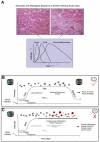Resolution of inflammation: state of the art, definitions and terms
- PMID: 17267386
- PMCID: PMC3119634
- DOI: 10.1096/fj.06-7227rev
Resolution of inflammation: state of the art, definitions and terms
Abstract
A recent focus meeting on Controlling Acute Inflammation was held in London, April 27-28, 2006, organized by D.W. Gilroy and S.D. Brain for the British Pharmacology Society. We concluded at the meeting that a consensus report was needed that addresses the rapid progress in this emerging field and details how the specific study of resolution of acute inflammation provides leads for novel anti-inflammatory therapeutics, as well as defines the terms and key components of interest in the resolution process within tissues as appreciated today. The inflammatory response protects the body against infection and injury but can itself become dysregulated with deleterious consequences to the host. It is now evident that endogenous biochemical pathways activated during defense reactions can counter-regulate inflammation and promote resolution. Hence, resolution is an active rather than a passive process, as once believed, which now promises novel approaches for the treatment of inflammation-associated diseases based on endogenous agonists of resolution.
Figures

References
-
- Cotran RS, Kumar V, Collins T, editors. Robbins Pathologic Basis of Disease. W.B. Saunders Co.; Philadelphia, Pennsylvania, USA: 1999.
-
- Serhan CN. A search for endogenous mechanisms of anti-inflammation uncovers novel chemical mediators: missing links to resolution. Histochem. Cell Biol. 2004;122:305–321. - PubMed
-
- Gilroy DW, Lawrence T, Perretti M, Rossi AG. Inflammatory resolution: new opportunities for drug discovery. Nat. Rev. Drug. Discov. 2004;3:401–416. - PubMed
-
- Perretti M. Endogenous mediators that inhibit the leukocyte-endothelium interaction. Trends Pharmacol. Sci. 1997;18:418–425. - PubMed
Publication types
MeSH terms
Substances
Grants and funding
LinkOut - more resources
Full Text Sources
Other Literature Sources
Medical
Miscellaneous

